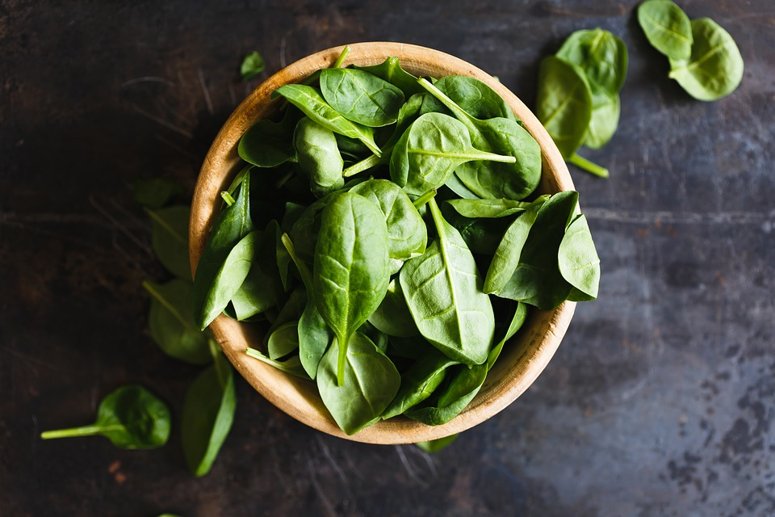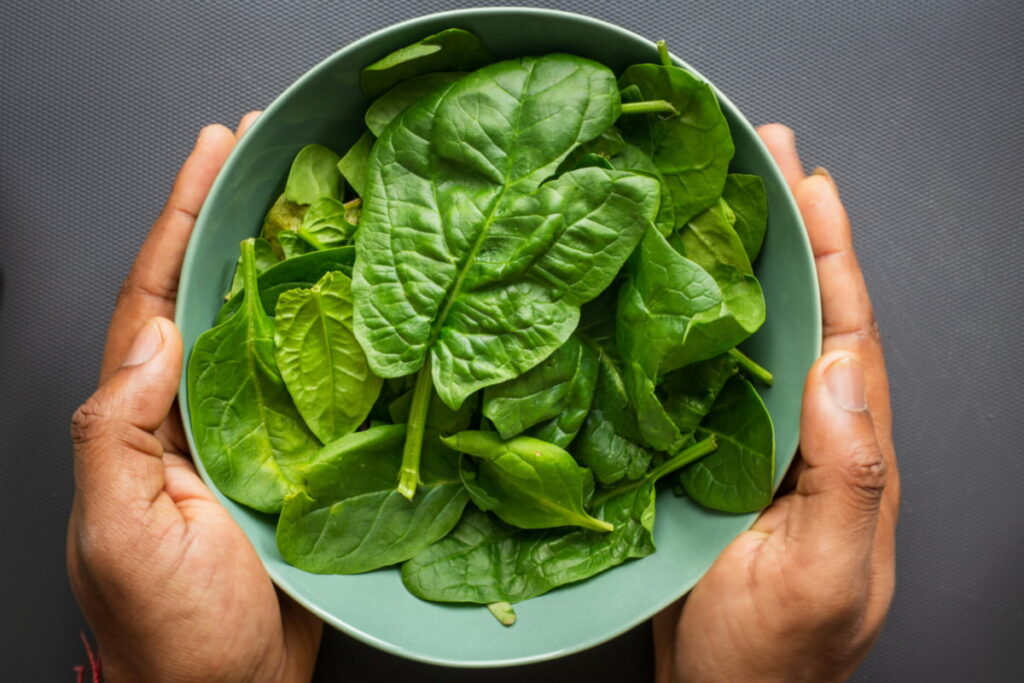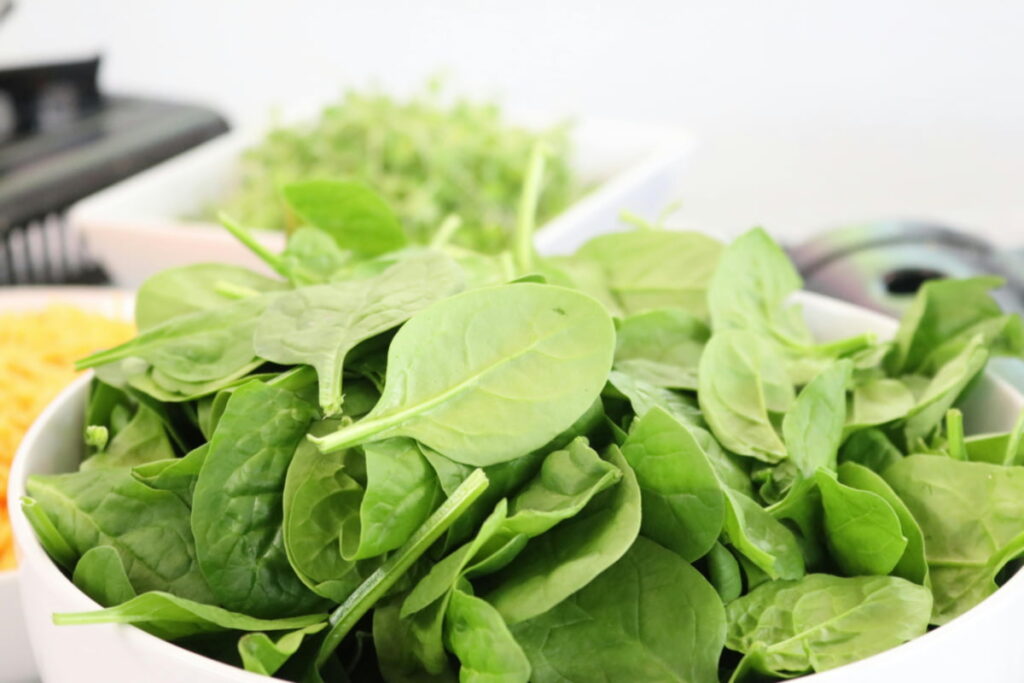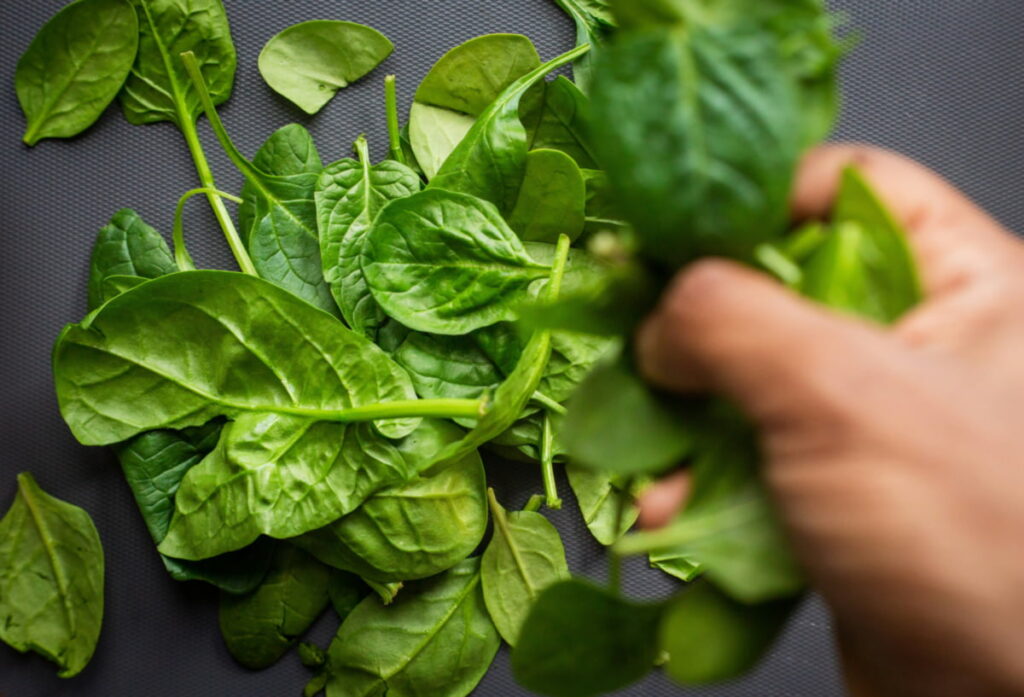
I’ll never forget the day my aunt caught me red-handed throwing out a half-wilted bag of spinach.
She gave me that look, part love, part “you really don’t know better yet”, and said,
“Why are you wasting that? Just freeze it!” Turns out, she was right.
Yes, you can freeze spinach, and it freezes beautifully when you do it right.
It won’t taste exactly like fresh (it gets a little softer), but it’s perfect for cooking, smoothies, soups, and anything you’d normally sauté.
So if you’ve ever wondered whether freezing spinach actually works, I’m going to show you that it’s not just about saving greens, it’s about cooking smarter, wasting less, and realizing your freezer might just be your most underrated kitchen tool.
Why Bother Freezing Spinach?

Let’s be honest, spinach never gets eaten as fast as we think it will.
It hides behind the milk, starts to wilt, and before you know it, you’re tossing out a half-used bag and a few dollars with it.
Freezing it changes that. Here’s why it’s worth your time:
- It saves money. No more throwing out soggy leaves. You use what you buy, and you can stock up when spinach is cheap or in season.
- It cuts food waste. The USDA estimates that up to 40% of food in U.S. homes goes uneaten. Freezing spinach is one of those small, everyday habits that helps shrink that number.
- It saves time. You can prep and freeze a big batch once, then grab what you need later, perfect for quick smoothies, soups, or weeknight meals.
- It keeps nutrients longer. According to Penn State research spinach stored in the freezer retains more of its folate and carotenoids than spinach left in the fridge for several days.
- It stays fresh and ready. Since spinach is seasonal, freezing a few bags means you’ll always have greens on hand, even when it’s not in season
What Freezing Actually Does to Spinach (and Why It’s Okay)

Here’s the science bit, but in plain English.
Spinach has a lot of water in it. When you freeze it, that water turns into little ice crystals that poke holes in the cell walls. When you thaw it, some water leaks out, and the texture gets softer, a process the University of Minnesota Extension
That’s why frozen spinach doesn’t work well in salads (it’s too limp), but it’s fantastic for cooked dishes.
It blends beautifully, it melts into sauces, and it’s still packed with nutrients. A 2023 review in the International Journal of Food Science & Technology found that blanching spinach (a quick dip in hot water) before freezing slows enzyme activity and helps keep the color and flavor.
Basically: a quick 2-minute blanch = better spinach later.
As Chef Walter Potenza explains in RINewsToday, the secret to freezing food well isn’t just about storing it cold — it’s about doing it right so your ingredients stay vibrant, not tired.
How to Freeze Spinach (3 Easy Ways That Actually Work)

There’s no one right way to freeze spinach, it depends on how you’ll use it later. I use three main methods, depending on whether I’m cooking, blending, or just trying to save a bag before it wilts.
1. Freezing Pureed Spinach Leaves
Perfect for smoothies, sauces, or anything you’d blend later.
How to do it:
- Wash your spinach well to remove any dirt.
- Add a splash of water to your blender (about 1 cup) and toss in a handful or two of spinach.
- Blend until smooth, then pour the puree into ice cube or muffin trays.
- Freeze until solid, then pop the cubes into freezer bags.
- Label, date, and store, they’ll keep for up to 6 months.
💡 My Tip: I use one cube per smoothie, it adds color and nutrients without the “green taste
2. Freezing Raw Spinach Leaves
The fastest, simplest option. Great if you want to use spinach for quick sautés or soups later.
How to do it:
- Rinse and pat the leaves dry.
- Pack meal-sized portions into freezer bags, squeeze out as much air as possible, and seal.
- Label and freeze flat for easy stacking.
That’s it. You can toss it straight from the freezer into your pan, no thawing needed.
3. Freezing Blanched Spinach Leaves
TThis is the pro move, and it’s the one most chefs recommend. Blanching helps the spinach keep its color, texture, and nutrients when frozen.
As Chef Trev told me:
“Blanching is for tenderness, and shocking is what stops the cooking and locks in the chlorophyll, that’s why the greens stay bright.”
How to do it:
- Boil a pot of water and set a bowl of ice water nearby.
- Drop the spinach in the boiling water for about 30 seconds.
- Quickly transfer it to the ice bath (“shock” it).
- Drain, squeeze out excess water, and pack into labeled freezer bags.
Blanched spinach takes up less space and thaws beautifully for cooked dishes
How to Actually Use Frozen Spinach
You don’t even have to thaw it, just toss it straight into your recipe.
- Stir into soups, stews, and sauces.
- Add to scrambled eggs or omelets.
- Blend into smoothies (it makes them thicker and colder).
- Mix into pasta, lasagna, or casseroles.
- Stir-fry near the end of cooking to avoid excess water.
A ScienceDirect study, found that properly blanched and frozen spinach maintains much of its antioxidant activity, so you’re not losing out on nutrition either.
Thawing Frozen Spinach (When You Actually Need To)
Most of the time, you don’t even have to thaw spinach, just toss it straight into your pan, soup, or smoothie, and it’ll melt right in. That’s the beauty of it.
But if you’re using it for baking, say, in spanakopita, quiche, or stuffed shells, you’ll want to thaw it first. The trick is to keep it from getting soggy.
Here’s what works best:
- Thaw it slowly in the fridge overnight or under cool running water.
- Squeeze out the excess moisture with your hands or a clean kitchen towel — that step’s the difference between crisp and soggy crusts.
That’s all you really need to know.
If you want a deeper dive into how to thaw spinach without turning it to mush, I break it all down in my thawing spinach guide.
Mistakes I Used to Make (and How I Fixed Them)
When I first started freezing spinach, I was doing everything wrong. Like… everything.
- Freezing it wet. Instant ice blocks. Now I dry it like I’m prepping for a photoshoot.
- Freezing in giant clumps. Then trying to break them apart with a knife. (Don’t.) Now I freeze flat or portion in cups.
- Thawing before using. Big mistake, it turns into swamp spinach. Cook from frozen instead.
- Skipping labels. Once I thought I was defrosting spinach for pasta… it was kale. Good, but not the same.
- Expecting it to act like fresh. It won’t, and that’s okay. Frozen spinach is for cooking, not for salads.
Every mistake taught me something, mostly patience, and that the freezer deserves more credit than we give it.
How Long Does Frozen Spinach Last?
Here’s what I’ve learned (and what the USDA backs up):
| Type | Best Within | Notes |
| Blanched spinach | 10–12 months | Keeps color and flavor best |
| Raw-frozen (unblanched) | 2–3 months | Slightly softer texture |
| Pureed spinach cubes | 4–6 months | Great for smoothies and sauces |
These are quality windows, not safety cutoffs. According to the USDA Food Safety and Inspection Service, food kept continuously at 0 °F (−18 °C) stays safe indefinitely, it’s the texture and flavor that fade over time.
The Bigger Lesson (and a Little Kitchen Wisdom)
Freezing spinach turned out to be about more than saving a bag of greens. It taught me that cooking smarter doesn’t mean cooking faster, it means cooking with intention.
Now, I see my freezer as an extension of my pantry. It’s not a place where food goes to die, it’s where it gets a second chance.
If you’ve got spinach on its last legs, don’t toss it. Freeze it, use it, and let it remind you that good cooking starts with not wasting what you already have.
And if you liked this, check out my other freezing guides, from herbs to cheese, and start building a freezer that actually works for you.